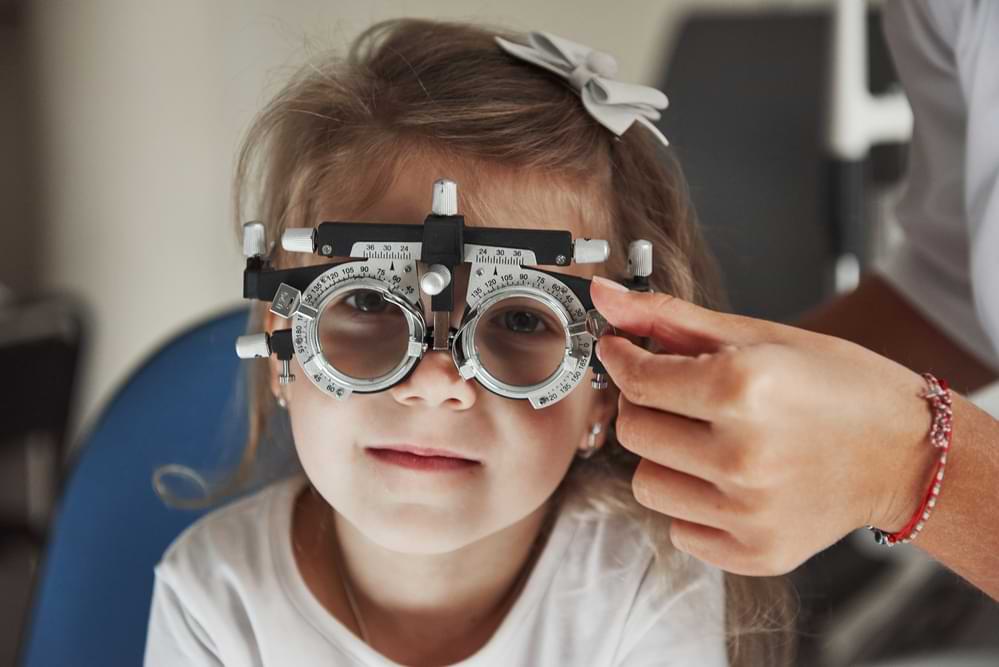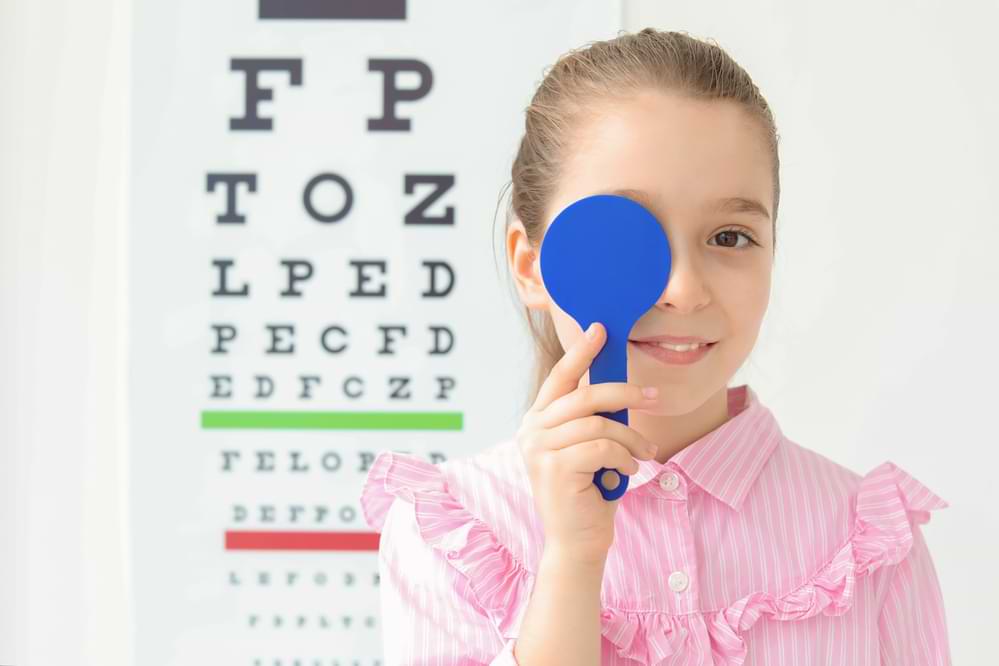Have you ever wondered how paediatric eye tests can shape your child’s future?
Many parents believe that if their child can see clearly up close or at a distance, there’s no need for an eye exam, but this overlooks critical aspects like depth perception and eye coordination, essential for overall vision health.
I’m Nandita Chowdhury, the owner and principal optometrist at Picton Eyecare. I take immense pride in being one of the few therapeutically qualified optometrists in our area, which allows me to prescribe medication for various eye conditions directly. My approach is focussed on providing personalized, professional eye care solutions that cater to each individual’s needs.
Take action for your child’s eye health now by booking a paediatric eye test. It’s a simple step that could make all the difference to their development.
Or keep exploring our site to understand the wide range of services we offer and how we tailor each consultation to meet your individual needs.
The Importance of Paediatric Eye Tests
Childhood eye care through paediatric eye tests are more important than many parents realize. A 2015 report by Deloitte highlighted that nearly a third of a million Australian children suffer from vision impairments that could drastically affect their learning and development.
Eye disorders, along with allergies and asthma, rank among the most prevalent chronic health issues affecting children in Australia.
And yet, shockingly, 44% of Aussie kids have not had an eye exam before their ninth birthday!
According to experts, 80% of learning is visual, and vision issues can deeply affect a child’s ability to focus in school, recognize words, and even participate fully in classroom activities. This sometimes leads to frustration and decrease in their motivation to learn, which is heartbreaking to see as a parent or an educator.
In my practice, I’ve encountered numerous cases where children struggle unnecessarily because their vision problems went undetected and untreated. These children often face challenges in social settings and sports, which can lead to lower self-esteem and, sadly, social isolation or even bullying.
Furthermore, developmental eye conditions like myopia, where the eyeball is abnormally elongated, can increase the risk of serious vision complications later in life, such as cataracts, glaucoma, retinal detachment and more.
I recommend that your child undergo their first comprehensive eye examination at six months old, followed by another at age three, and again just before they start school at around five or six years old. These check-ups are crucial in ensuring that any potential vision problems can be addressed early.

Key Tests and Technologies Used in a Paediatric Eye Test
When it comes to paediatric eye tests at Picton Eyecare, we use a variety of tests and technologies designed to ensure comprehensive eye health monitoring for children. Our methods are tailored to be child-friendly while providing crucial information about their vision and eye health.
- Initial Case History: Gathering initial case history is essential. This includes comments from teachers that may indicate learning delays, giving us initial insights into the child’s visual challenges.
- Hereditary Risks: We assess hereditary risks by examining the family’s eye health history. This helps us detect and manage congenital eye diseases like glaucoma and cataract early on. It can also be a flag for us to check for long sightedness, short sightedness or astigmatism.
- Visual Acuity Tests: Tailored visual acuity tests for children can involve Lea Symbols or HOTV Chart (pictures and symbols). These tests are designed to accurately measure how well a child can see at different distances.
- Auto-refraction and Cycloplegic Refraction: Auto-refraction helps us quickly estimate a child’s prescription. Cycloplegic refraction provides a more detailed assessment by temporarily relaxing the eye’s focusing muscles.
- Comprehensive Ocular Health Assessment: This involves checking the anterior segment (front) and fundus (back) of the eye. It ensures a thorough examination of all important aspects of eye health.
- Optical Coherence Tomography (OCT): Although not always necessary, OCT can be invaluable in providing a detailed view of the eye’s structure, aiding in the detection of conditions that are not visible during a standard exam.
- Distance Vision Tests: We utilize various charts, such as the Snellen Chart and Picture Charts, to assess how well children can see from a distance.
- Reading Vision Tests: Near Vision Chart and Jaeger Chart are used to evaluate a child’s reading vision, essential for their academic performance.
- Binocular Vision Tests: Tests like Stereopsis, Convergence, and Motility examine how well the eyes work together. These are crucial for tasks that require good depth perception. The “cover test” will rule out if there is any eye turn.
- Color Vision Testing: We conduct color vision tests to ensure children can differentiate colors correctly, which is vital for certain educational activities and potential future careers.
- Intraocular Pressure: While not routinely performed on children, this test is conducted if there is a specific concern, to rule out conditions like glaucoma.
At Picton Eyecare, we believe in providing a solid foundation for children’s visual health, supporting their educational development and overall well-being. Our paediatric eye tests are designed to monitor your child’s eyes as they grow and their vision needs evolve.
Watch the following video to get a better understanding of some of the tests that are routinely done during a paediatric eye test.
Common Pediatric Eye Conditions Identified at Picton Eyecare
We frequently diagnose and manage a range of pediatric eye conditions at Picton Eyecare that can significantly impact a child’s visual development and overall quality of life.
- Refractive Errors: Children often exhibit significant hyperopia (farsightedness) or astigmatism, which can blur vision at various distances and impede daily activities. Correcting these with appropriate eyeglasses can vastly improve their visual experience and performance in school.
- Amblyopia: Known as lazy eye, amblyopia is a condition where one eye, or in rare cases both eyes, do not develop normal vision, leading to lifelong visual challenges if untreated. We implement various therapies to strengthen the weaker eye/s and promote optimal visual development. Treatment can include patching or wearing glasses and contact lenses.
- Strabismus: This condition involves misalignment of the eyes, which may cause double vision, (eye turn) or lead to the development of amblyopia. Treatment options at our clinic include vision therapy, corrective lenses, or referral to ophthalmologist for surgery to properly align the eyes and improve binocular vision.
- Retinopathy of Prematurity (ROP): Particularly prevalent in premature infants, ROP involves abnormal blood vessel growth that can damage the retina. We collaborate with pediatricians to monitor and manage this condition effectively to protect the child’s vision.
- Congenital Nasolacrimal Duct Obstruction (CNLDO): CNLDO blocks the tear ducts in newborns, causing persistent watery eyes and increasing the risk of infection. Treatments may range from simple tear duct massage to surgical procedures if the condition does not resolve on its own.
- Dacryocystitis and Canaliculitis: These infections cause inflammation and blockage in parts of the tear drainage system, leading to discomfort, redness, and discharge. We provide treatments that alleviate symptoms and resolve the infections, ensuring comfort and clear vision for the affected children.
Latest Advances in Myopia Control Treatments
Recent years have seen several advances in the management of myopia, commonly known as nearsightedness. Myopia control glasses and soft contact lenses are specifically designed to slow the progression of myopia in children. These lenses help to focus light in a way that reduces the stimulus to the eye which is believed responsible for the condition.
Additionally, orthokeratology, a non-surgical process involving overnight wear of rigid contact lenses that reshape the cornea, has a proven clinical record in effectively slowing the progress of myopia. This method allows children to enjoy clear daytime vision without needing glasses or contacts. You could say it works just like a night time dental retainer – by for the eyes!
Another option is the use of atropine eye drops. Low-dose atropine is minimally invasive and has few side effects, making it a popular choice for parents concerned about their children’s rapidly changing prescriptions.
My Tips for Parents
How can you tell if your child might be experiencing vision problems? Recognizing the signs early can make a significant difference in your child’s eye health and overall well-being. As an optometrist, I’ve put together some tips for parents to help monitor and maintain their child’s vision.
One key indicator is if your child frequently squints, rubs their eyes, or complains of headaches, which can signal refractive errors like nearsightedness or farsightedness. Also, watch for any difficulty they may have in reading or a tendency to hold books very close, which could point to potential vision issues.
Encouraging healthy visual habits is equally important. Ensure your child takes breaks during reading or screen time to prevent eye strain. Promoting outdoor play can also aid in the natural development of their eyesight and reduce the progression of myopia, commonly known as nearsightedness.
Lastly, know when to seek immediate care. If your child exhibits sudden vision changes, eye pain, or increased sensitivity to light, these could be signs of serious conditions that require prompt attention. Keeping these guidelines in mind will help you safeguard your child’s vision as they grow.
Conclusion
With a commitment to community and a passion for eye health, Picton Eyecare provides comprehensive eye exams for children, setting them up for a future of clear vision.
Delaying an eye care consultation might mean missing the critical window for treating conditions easily, leading to more complex treatments down the line.
So, don’t let another day go by worrying about your child’s eye health; book an appointment today and rest easy knowing you’ve taken action.
You can call us on (02) 4603 2309 or arrange an appointment using the “Book Now” button in the navigation menu. We are conveniently located in the heart of Picton, NSW. There is plenty of parking available at the back of our store.

B.Optom (UoA), PGOT (UNSW)
Nandita is the principal optometrist of Picton Eyecare. She has over 15 years of extensive experience working in corporate and independent optometry practice. Opening Picton Eyecare in 2022 has fulfilled Nandita’s dream of an independent optometry practice, committed in serving the local community of Wollondilly and surrounding areas.
Nandita is caring and passionate about providing professional, personal and customised solution for every patient. She takes interest in all her patients and employs her skills and expertise to achieve the best possible outcome for the patient. She maintains great relationships with other medical professionals in the area.
Nandita is a local resident and has been working in the Southern Highlands for many years. She has a loyal following of patients who value her clinical and interpersonal relationships.
When not at work Nandita loves spending time with her family.
